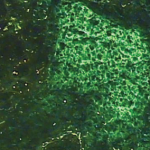We have concentrated therapeutic efforts on pathways involving T-cell and B-cell activation, and these therapies do improve extraglandular manifestations. However, these cytokines also affect intracellular calcium flux in neural receptors and may modulate their associated function. We need to focus our attention on chemokines such as monocyte chemoattractant protein-1 (MCP-1), macrophage inflammatory protein-2 (MIP-2), and other agonists of glucagon-related peptide (GCRP) receptors. In addition, neural receptors such as TRPV1, TRPM8, TRPA1, and GCRP are involved in transduction of ocular and oral pain; thus, they should be considered as potential therapeutic targets.6
How We Define Benign, Moderate, and Severe SS
In pSS, clinical features are often divided into two groups:
- Benign subjective symptoms including dryness, arthralgias, myalgias, vague cognitive (executive function) disturbance, and fatigue; and
- Extraglandular or systemic manifestations including rash, synovitis, myositis, vasculitis, pulmonary, renal, neurologic (central and peripheral), hematopoetic (anemia, thrombocytopenia), and lymphoproliferative, including lymphoma.
Although we consider the subjective symptoms to be “benign,” they are the chief cause of patient disability. As noted, the correlation between symptoms and objective signs is extremely poor, and represents one of the unmet needs for future therapies.
Benign Symptoms and the “Functional Circuit”
Although peripheral inflammation may initiate the process, the continued stimulation of the peripheral pain receptors may initiate a series of neurologic processes that become dissociated from the original stimuli. This may occur at either the cortical level or at the level of the spinal cord. We will first review the proposed cortical circuit.
Stern et al introduced the concept of “functional circuit.”11-14 As shown in Figure 1, the mucosal surfaces such as the cornea (or mouth) are blanketed by highly innervated, unmyelinated nerve fibers. These afferent fibers run to the particular areas of the midbrain called the lacrimal and salvatory nuclei.
The nuclei also communicate with particular cortical areas that govern the sensation of dryness and discomfort. Considering the peripheral and cortical inputs, the efferent nerves emerge from these midbrain nuclei and innervate the blood vessels and secretory (lacrimal or salivary) glands.
In patients with SS, this is simplified schematically in Figure 2, where the infiltration of lymphocytes into the salivary gland generates an inflammatory milieu with cytokines and metalloproteinases that interfere with glandular transduction of neural signals to activate the secretory process.
Treatment with biologics, including anti-CD20 and anti–B-cell activating factor, decreases the number of lymphocytes in the gland and reduces glandular mRNA transcripts of proinflammatory signals, but there is no corresponding improvement in the patient’s symptoms. The current dilemma is summarized in Figure 2, where the central nervous system is now shown as a connection to the midbrain (cranial nerve V) circuits.


